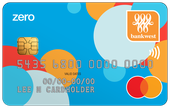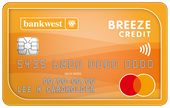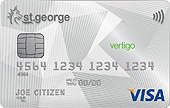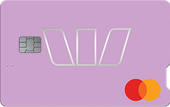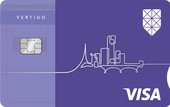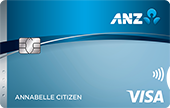If you have a low income, there are several credit cards that require a low minimum income to qualify. Read on for more details on what to look for.
What is a low income credit card?
Low income credit cards allow Australians who have small annual earnings to enjoy the benefits of using a credit card such as shopping online and also allow access to extra funds to pay for bills and other everyday expenses. Used responsibly, they can also help build your credit.
Common features of this type of card include low annual fees, low interest rates, and low credit limits. They typically do not have rewards, insurance, or any other perks and benefits.
Minimum annual income needed to qualify
A number of credit cards are available for people with a low income. These cards generally require income in the range of $15,000 - $35,000 per annum or roughly $1,250 - $3,000 per month, making them an option for students, single parents, pensioners, self-employed people or freelancers, and people with casual work.
What is a low income?
You can compare your personal annual income against national data from the Bureau of Statistics, which show that the average Australian annual income is around $64,000.
- Median income for full-time employed men: ~$80,000
- Median income for full-time employed women: ~$71,000
Workers in the hospitality, retail, and consumer services sectors tend to earn less than the national average. Mining, utility, and financial services workers earn more on average.
Who can apply for a low income credit card?
You can apply for credit cards with low income requirements if you have a small salary from a full or part-time job, income from casual work, income from Centrelink payments, or income from alternative sources.
Small salary from a job
If you have a job but earn a small salary, you can apply for a credit card. However, you need to check that it does not require more income than you currently earn. If you have just started your job, you may need to wait before applying since some cards require several months of payslips as proof.
Credit cards for casual workers
If you are a casual worker, freelancer, or work in the gig economy, your income may be irregular. However, several cards accept applicants with casual income as per their criteria. One such example, the Westpac Low Rate, accepts applications from people who have been casually employed with the same employer for at least 6 months.
Credit cards for people on Centrelink
If you are on Centrelink, you can still apply for a credit card. With the exception of NAB, the big four banks accept carer's allowance, child support, parental leave, and family tax benefit A and B payments. Check the specific minimum criteria for whatever card you want since acceptance varies.
Credit cards for unemployed people
It will be much more difficult to get a credit card if you have no job. However, it is not impossible since people who have an income from an alternative source — pension, investments, rental income, etc. — can still get a credit card so long as they have adequate proof.
Are there credit cards with no income requirement?
While many cards do not state up-front what their minimum income requirement is, banks still require income of some sort since you need to be able to repay whatever you borrow. Remember that for some cards, income from casual work and Centrelink are both acceptable.
What to look for when comparing low income credit cards
If your income is low, then keeping your costs down is important. Here's what to check before applying.
- Minimum income requirement. Make sure that you earn enough to meet the minimum required and that you have proof of it.
- Low annual fee. Ideally there would be no annual fee to pay at all, but if there is, make sure it is affordable. If the annual fee has been waived for the first year, check what it would be for the second year onward.
- Low interest rates. Check what the interest rate would be for any balance carried over or if you used it for a cash advance.
- Interest-free days. Most cards have up to 55 days interest-free, which means you will pay no interest if you pay off the balance owed in full each month. This can really help with cash flow and spreading the cost between paydays.
- Introductory offers. Many credit cards for low earners have 0% introductory offers on balance transfers or purchases, and sometimes both. Check what the rate reverts to once the introductory offer expires.
Benefits and drawbacks
Low income credit cards have their good and bad points, which you should be fully aware of before applying.
Pros
- Spread costs and improve cash flow. Used responsibly, a credit card can help you stay on top of your bills.
- Build your credit score. With a positive track record of repayments, you can build your credit score and qualify for better credit terms in future.
Cons
- Potential to get into debt. If you keep using the card but can't pay off the balance in full, you might find yourself with a debt you can't get out of easily.
- You could mismanage your account and damage your credit score. If you are unable to make a payment on time because you've lost some hours and your pay is down, it could have a detrimental effect on your credit score.
Considerations before applying
- What is the source of your income? This is important since not all banks accept income from casual work and Centrelink. Income from dividends, rental payments from an investment property, and other government benefit payments may be acceptable too, but you should check first since it will dictate what cards you are eligible for.
- Can you prove your income? You may be required to provide evidence of your income. This is typically done with a copy of your recent payslips. The bank may also ask for evidence of the funds being deposited into your bank account. The amounts should match up or it will raise questions.
- Have you missed any payments recently? Late payments and defaults will be recorded on your credit report, which the bank will check. Not only do they negatively impact your credit score, but they will also make it harder to get approved for credit in future. If you have a low credit score, work on improving it before applying. Although it's harder to get a card with bad credit, it's not impossible.
- Can you afford it? Apart from the annual fee, will you be able to repay the balance in full to avoid interest? If not, can you afford the interest on top of paying back the debt?
